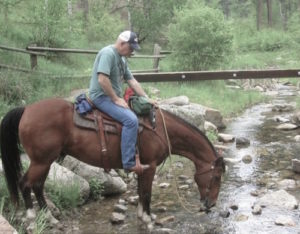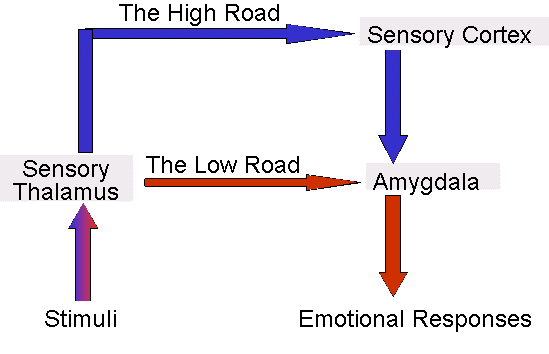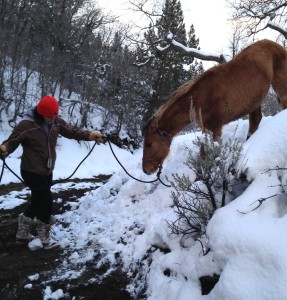Mechanics know that one big problem – smoke under the hood – is often caused by tiny, less visible issues. To solve the big problem, you need to understand finer points and foundational concepts. The more you know, the more effective you can be in solving the big problem.
The same can be said with horsemanship and the details of horse brain function. The more you know, the more effective you  can be in solving behavior or training problems.
can be in solving behavior or training problems.
Two books on human brain function are helping me sort through what I see and do with horses. They are reaffirming some of my techniques while dismissing others. This winter, I’ve read The Talent Code by Daniel Coyle and The Body Keeps the Score: Brain, Mind, and Body in the Healing of Trauma, by Dr. Bessel Van Der Kolk.
Read about Coyle and Deep Practice here.
While it’s a mistake to interpret animal behavior through a lens of human dynamics, better know as “anthropomorphizing,” it is appropriate to relate basic actions and reactions of horses with humans. Why? We humans share with horses the same primitive layers of the brain: the reptilian system, the limbic system, and the brain stem.
We also share basic neurological chemistry and building blocks. The way our brains grow and function is largely the same.
My partner, Dr. Steve Peters, and I have several rescued horses.
- Brooke, for instance, was kept in a stall with three other horses for years. At every feeding, she had to fight for her food. Read about her here.
- Jolene, the mule, was born in Missouri, sold at an Iowa auction, and has a history of bolting at the slightest cue. Read more about her here.
The Body Keeps the Score: Brain, Mind, and Body in the Healing of Trauma, by Dr. Bessel Van Der Kolk has helped me better understand the neurology behind their “bad” behaviors.
He explains:
The thalamus, inside the limbic system, receives sensory information from the eyes, nose, ears, and skin. It is the “cook” within the brain. The thalamus stirs all the input from our perceptions into a fully blended autobiographical soup, an integrated, coherent experience of “this is what is happening to me.”
It passes information in two directions, down to the amygdala (the primal “low road”) and to the cortex (the conscious “high road”).
The route to the amygdala is several milliseconds faster than the route to the cortex. In other words, the emotional brain has first dibs on interpreting incoming information.
 Don’t be confused by the word “emotional.” It is from the Latin word, emovere, and refers to the limbic system and the Flight or Fight response.
Don’t be confused by the word “emotional.” It is from the Latin word, emovere, and refers to the limbic system and the Flight or Fight response.
Van Der Kolk continues:
The amygdala is the brain’s smoke detector. It identifies whether or not incoming input is relevant to our survival. It does so quickly and automatically, with help of feedback from the hippocampus, a nearby structure that relates the new input to past experiences.
If the amygdala sense threat, it sends an immediate message to hypothalamus and the autonomic nervous system to orchestrate a whole body response. It decides whether incoming information is a threat before we are consciously aware of the danger. By the time we realize what is happening, our body may already be on the move.
Danger is a normal part of life…[but] after trauma the world is experienced with a different nervous system… Every new encounter or event is contaminated by the past.
I can’t help what happened in the past, but I can encourage new habits by the way I routinely, patiently encourage them to not hit the low road, ie, by reacting with fear or aggression.
It’s hard work and, in my experience, it takes years to carve out new, healthier, safer neural pathways. Eventually, I’ve observed that Van Der Kolk is correct:
Generally the rational brain can override the emotional brain, as long as our fears don’t hijack us…But the moment we feel trapped…we are vulnerable to activating old maps and following their directions.


Wow! Amazed again about the depth you move readers into the psyche of the horse (and the people who work with them!)
I’m a psychology professor at a community college and was first introduced to your website by a student and now a second student has done the same! The assignments I’ve given them have been on the High Road Low Road theory by LeDoux and on the physical and emotional impact of trauma. That included intergenerational trauma, which would be an interesting idea to explore in your work too! Physically, stress hormones cross the placenta just like poisons or drugs do. So if a person (or mare) is highly stressed during pregnancy, the baby (or foal) will have been swimming around in stress hormones in utero, will be born stressed and have a higher predilection for ongoing anxiety in general. Many appreciations for your work. I’ve been a subscriber ever since my first student sent me the link to your blog.